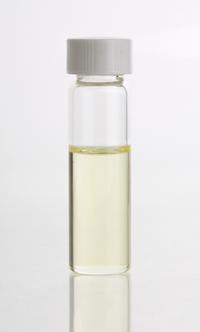
Photo from wikipedia
Graphical abstract Figure. No Caption available. HighlightsThe chemical composition of three essential oils was determined.The sensibility of S. typhimurium was determined by two different methods.A mixture designs was carried out… Click to show full abstract
Graphical abstract Figure. No Caption available. HighlightsThe chemical composition of three essential oils was determined.The sensibility of S. typhimurium was determined by two different methods.A mixture designs was carried out to find the optimal formulation.55% and 45% of thyme and myrtle EOs, respectively, was the optimal formulation. ABSTRACT To increase the sensibility of Salmonella typhimurium strain, a mixture of Thymus vulgaris L. (T. vulgaris L.), Rosmarinus officinalis L. (R. officinalis L.) and Myrtus communis L. (M. communis L.) essential oils (EOs) was used in combined treatment by experimental design methodology (mixture design). The chemical composition of EOs was firstly identified by GC and GC/MS and their antibacterial activity was evaluated. The results of this first step have shown that thymol and borneol were the major compounds in T. vulgaris and M. communis L. EOs, respectively, while 1,8‐cineole and &agr;‐pinene were found as major compounds in R. officinalis L. The same results have shown a strong antibacterial activity of T. vulgaris L. EO followed by an important power of M. communis L. EO against a moderate activity of R. officinalis L. EO. Besides, 1/20 (v/v) was the concentration giving a strain response classified as sensitive. From this concentration, the mixture design was performed and analyzed. The optimization of mixtures antibacterial activities has highlighted the synergistic effect between T. vulgaris L. and M. communis L. essential oils. A formulation comprising 55% of T. vulgaris L. and 45% of M. communis L. essential oils, respectively, can be considered for the increase of Salmonella typhimurium sensibility.
Journal Title: European Journal of Pharmaceutics and Biopharmaceutics
Year Published: 2018
Link to full text (if available)
Share on Social Media: Sign Up to like & get
recommendations!